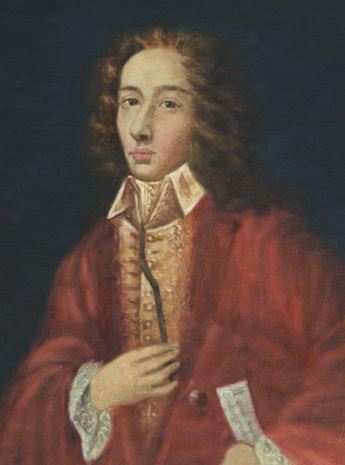Early Life and Musical Education
Giovanni Battista Pergolesi, born on January 4, 1710, in Jesi, Italy, was a composer whose brief life left an indelible mark on the world of music. Born into a family of modest means, Pergolesi’s exceptional musical talent was recognized early. His parents, Francesco Andrea Draghi and Anna Vittoria Giorgi, ensured he received proper musical education.
At the age of 15, Pergolesi was sent to Naples to study at the prestigious Conservatorio dei Poveri di Gesù Cristo. Here, under the guidance of renowned masters such as Gaetano Greco and Francesco Durante, he honed his skills in violin, organ, and composition. The young Pergolesi quickly distinguished himself as a prodigy, excelling in both instrumental performance and composition.
Rise to Fame in Naples
Upon completing his studies in 1731, Pergolesi was appointed as maestro di cappella to Prince Ferdinando Colonna Stigliano. This position marked the beginning of his professional career and provided him with opportunities to compose both sacred and secular works.
His first major success came in 1732 with the opera seria “Salustia,” which established him as a composer of note in Naples. However, it was his comic intermezzo “La Serva Padrona” (The Maid Turned Mistress), first performed in 1733, that would cement his reputation and influence the course of operatic history.
Contributions to Opera
Pergolesi’s contributions to opera, particularly opera buffa, were significant and far-reaching. “La Serva Padrona,” with its lively characters and innovative style, became a sensation across Europe. This short comic opera not only entertained audiences but also sparked a significant debate in Paris known as the “Querelle des Bouffons,” which pitted Italian and French operatic styles against each other.
Other notable operas by Pergolesi include:
- “Il prigionier superbo” (1733)
- “Adriano in Siria” (1734)
- “L’Olimpiade” (1735)
These works showcased Pergolesi’s ability to blend beautiful melodies with dramatic expression, setting a new standard for operatic composition.
Sacred Music and Instrumental Works
While Pergolesi is often remembered for his contributions to opera, his sacred music is equally noteworthy. His “Stabat Mater,” composed in the final weeks of his life, is considered a masterpiece of Baroque sacred music. This work, with its emotional depth and exquisite melodies, has remained a staple of the classical repertoire for centuries.
Other significant sacred works include:
- “Missa Romana” (1734)
- “Confitebor tibi Domine” (1732)
- “Salve Regina” in C minor
Pergolesi also composed several instrumental pieces, including:
- Concerto for Violin, Strings and Continuo in B-flat major
- Sinfonia for Cello and Basso Continuo in F major
- Sonata No. 1 in G major
These works demonstrate his versatility as a composer and his mastery of various musical forms.
Musical Style and Influence
Pergolesi’s musical style was characterized by its clarity, expressiveness, and melodic beauty. He had a unique ability to convey emotion through his music, whether in the comic scenes of his operas or the somber tones of his sacred works. His approach to composition helped bridge the gap between the Baroque and Classical periods, influencing later composers such as Mozart and Haydn.
Key aspects of Pergolesi’s style include:
- Graceful, singable melodies
- Expressive harmonies
- Clear textures
- Strong sense of drama and character
Legacy and Posthumous Fame
Tragically, Pergolesi’s promising career was cut short by tuberculosis. He retreated to the Franciscan monastery in Pozzuoli, where he completed his “Stabat Mater” before passing away on March 16, 1736, at the young age of 26.
Despite his short life, Pergolesi’s influence on music was profound and long-lasting. After his death, his fame grew to such an extent that many works were falsely attributed to him, a testament to the demand for his music. His style influenced the development of Classical music, and his works continued to be performed and admired throughout Europe.
Some key aspects of Pergolesi’s legacy include:
- Influence on the development of opera buffa
- Contribution to the evolution of the Classical style
- Enduring popularity of works like “Stabat Mater” and “La Serva Padrona”
- Inspiration to later composers, including Bach, who adapted some of his works
Rediscovery and Modern Appreciation
In the 20th and 21st centuries, there has been a renewed interest in Pergolesi’s music. Musicologists have worked to separate his genuine compositions from those falsely attributed to him, leading to a clearer understanding of his true output and style.
Today, Pergolesi is recognized as a key figure in the transition between the Baroque and Classical periods. His operas are regularly performed in major opera houses, and his “Stabat Mater” remains a beloved piece in the choral repertoire.
Conclusion
Giovanni Battista Pergolesi’s life, though brief, was marked by extraordinary musical achievement. In just 26 years, he produced works that would influence the course of musical history. His ability to blend beautiful melodies with dramatic expression, whether in comic opera or sacred music, set new standards for composition.
Pergolesi’s legacy serves as a poignant reminder of the unpredictable nature of genius and the enduring power of music. Though he lived for only a short time, his contributions continue to enrich and inspire the world of music centuries after his passing. The story of Giovanni Battista Pergolesi is not just one of musical brilliance, but of a life lived with passion and creativity, leaving an indelible mark on the tapestry of musical history.

